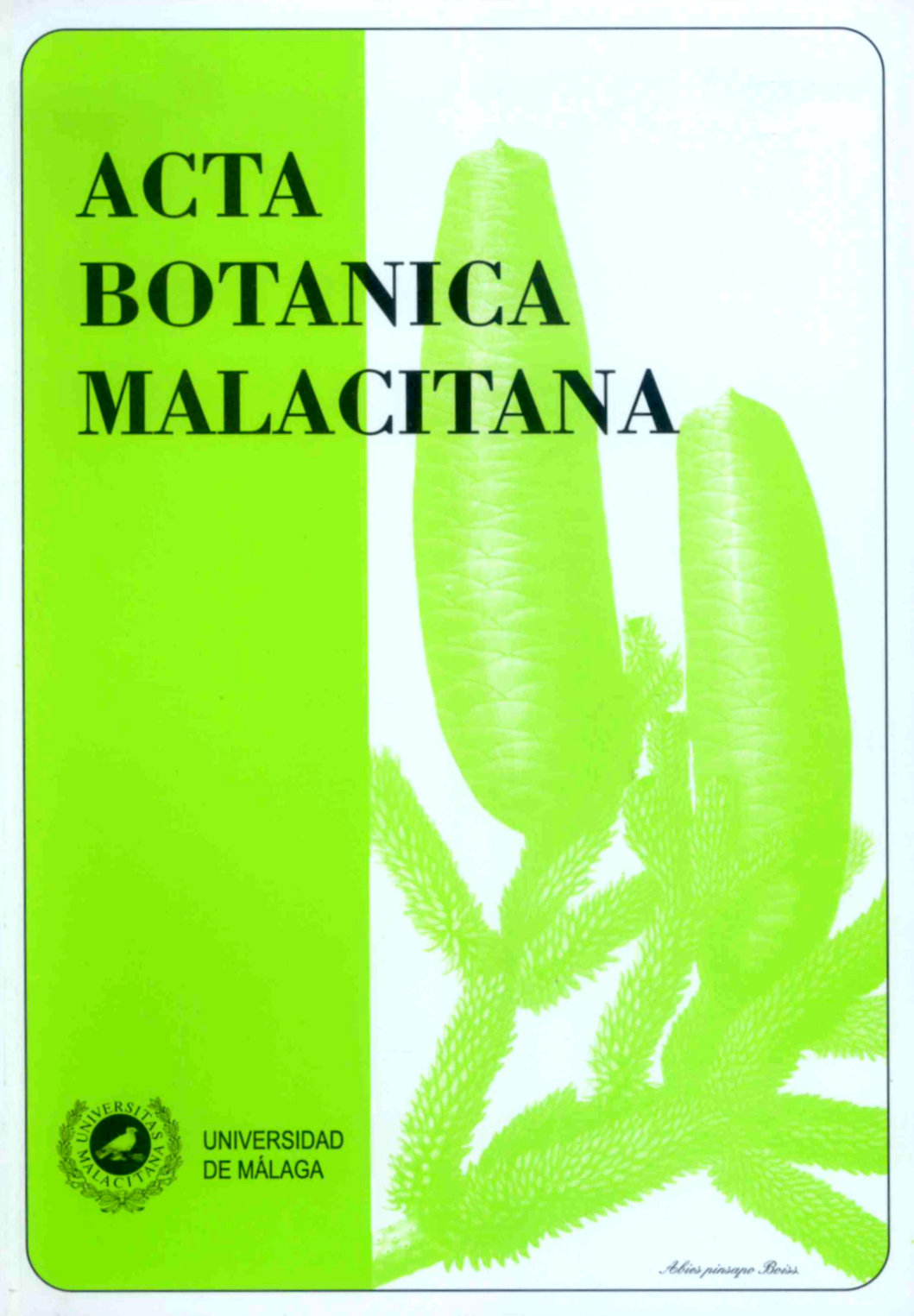Endodermis foliares en el ge?nero Isoetes L. (Isoetaceae).
DOI:
https://doi.org/10.24310/abm.v29i0.7229Abstract
RESUMEN. Endodermis foliares en el género Isoetes L. (Isoetaceae). La presencia y naturaleza de la endodermis en microfilos de 18 taxones de Isoetes se puso de manifiesto con técnicas microquímicas de coloración con TBO y mediante fluorescencia intrínseca (autofluorescencia). Las especies estudiadas son: I. adspersa, I. andina, I. boliviensis, I. boryana, I.brochonii, I. durieui, I. echinospora, I.engelmanii, I. histrix, I. lacustris, I. lechleri, I. longissima, I. malinverniana, I. melanopoda, I. setacea, I. storkii, I. velata subsp. velata, I. velata subsp. asturicense. Desde el punto de vista morfológico se reconocen tres tipos de endodermis, que coexisten en la misma hoja. Una endodermis primaria con bandas de Caspary, que se desarrolla inicialmente rodeando los canales intrastelares, pero que evolucionaría hacia endodermis secundaria (con engrosamientos «en U»), ya que éste es el tipo que se encuentra en torno de los canales intrastelares en microfilos de todas las especies estudiadas. También se forma una endodermis secundaria (con engrosamientos «en U»), parcial o completa, rodeando las cámaras aeríferas, en todas las especies estudiadas. Las especies que crecen a mayor altura sobre el nivel del mar pueden desarrollar en esta zona una endodermis terciaria (con engrosamientos «en O»). La endodermis de las cámaras aeríferas está menos desarrollada o desaparece en la porción del microfilo que se encuentra hundida en el sustrato, no así la endodermis de los canales intrastelares. La función reguladora del flujo de agua y metabolitos entre el haz vascular y el mesofilo explicaría tanto la presencia como la especialización de estas capas en microfilos sujetos a estrés hídrico.
Palabras clave. Isoetes, microfilos, anatomía, endodermis, estrés hídrico
ABSTRACT. Foliar endodermis in genus Isoetes L. (Isoetaceae). Microchemical analysis with TBO, and intrinsic fluorescence (autofluorescence) were used to detect the presence and occurrence of endodermis in microphylls of 18 taxa of genus Isoetes (I. adspersa, I. andina, I. boliviensis, I. boryana, I.brochonii, I. durieui, I. echinospora, I.engelmanii, I. histrix, I. lacustris, I. lechleri, I. longissima, I. malinverniana, I. melanopoda, I. setacea, I. storkii, I. velata subsp. velata, I. velata subsp. asturicense). From a morphological point of view, three known endodermal types can be found in the microphylls, and they also coexist in the same leaf. Casparian strips are developed in a primary endodermis that surrounds intrastelar canals, which probably progress to a secondary endodermis (with «U thickenings»), since microphylls of all studied species bear secondary, suberized and lignified endodermis in every intrastelar canal. A secondary or even a tertiary lignified endodermis develops in mesophyll cells of the central area of the leaf next to the air chambers; secondary endodermis occurs in all studied species, and tertiary endodermis was found only in species that live in bogs, moors or seasonal swamps, at the higher altitudes in the Southamerican Andes. Endodermis of the air chambers become thinner or disappears in the buried part of the microphylls, while the endodermis of intrastelar canals does not change. Comments are made on the adaptive significance of specialized endodermal layer in aquatic, amphibious and terrestrial species. The participation of the endodermis in the regulation of the loss of water and metabolites from the vascular system to the mesophyll could be an explanation of the presence of these layers.
Key words. Isoetes, microphylls, anatomy, endodermis, hydric stress
Downloads
Metrics
Downloads
Published
How to Cite
Issue
Section
License
All information related to the licensing of published works in Acta Botanica Malacitana and copyright can be found in our Editorial Policy.







1.png)
